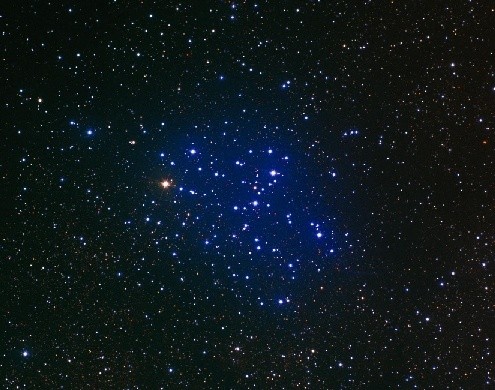
|
Explanation: To some, the outline of the open cluster of stars M6 resembles a butterfly. M6, also known as NGC 6405, spans about 20 light-years and lies about 2,000 light years distant. M6 can best be seen in a dark sky with binoculars towards the constellation of Scorpius, coving about as much of the sky as the full moon. Like other open clusters, M6 is composed predominantly of young blue stars, although the brightest star is nearly orange. M6 is estimated to be about 100 million years old. Determining the distance to clusters like M6 helps astronomers calibrate the distance scale of the universe.
|
January February March April May June July August September October November December |
| ||||||||||||||||||||||||||||||||||||||||||||||||
NASA Web Site Statements, Warnings, and Disclaimers
NASA Official: Jay Norris. Specific rights apply.
A service of: LHEA at NASA / GSFC
& Michigan Tech. U.
Based on Astronomy Picture
Of the Day
Publications with keywords: butterfly nebula - open cluster
Publications with words: butterfly nebula - open cluster
See also:
- APOD: 2025 August 7 Á The Double Cluster in Perseus
- NGC 6302: The Butterfly Nebula
- APOD: 2025 April 28 Á Gum 37 and the Southern Tadpoles
- Open Star Clusters M35 and NGC 2158
- APOD: 2025 February 25 Á M41: The Little Beehive Star Cluster
- APOD: 2025 February 11 Á The Spider and the Fly
- APOD: 2024 October 29 Á NGC 602: Stars Versus Pillars from Webb
